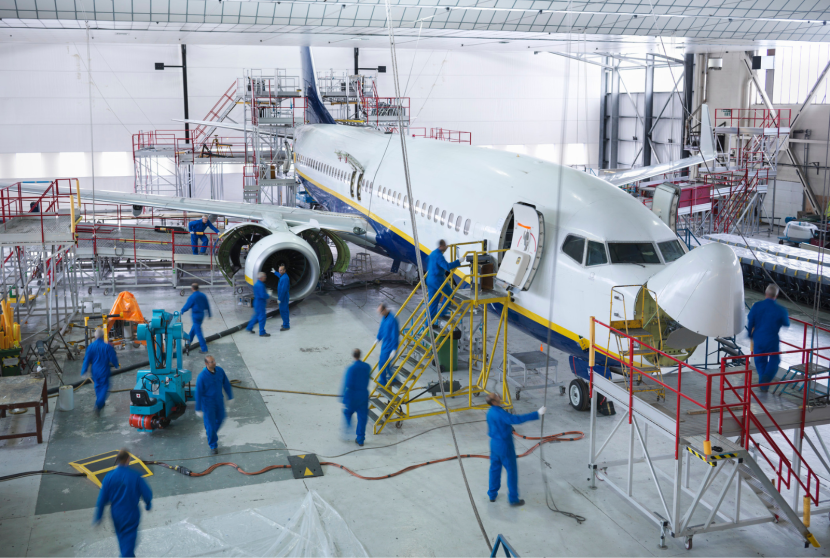From airplanes soaring through the clouds to rockets exploring deep space, aerospace engineering is the brainpower behind humankind’s most advanced flying machines. If you’ve ever gazed at the sky and wondered how planes fly or how astronauts travel beyond Earth, this field might be your launchpad into a fascinating world of science, innovation, and discovery.
In this beginner’s guide, we’ll break down what aerospace engineering is, what aerospace engineers actually do, and how you can pursue a career in this exciting field.
What Is Aerospace Engineering?
Aerospace engineering is the branch of engineering that focuses on the design, development, testing, and production of aircraft, spacecraft, and related systems and equipment. It is divided into two main subfields:
1. Aeronautical Engineering
This deals with aircraft that fly within Earth’s atmosphere—like commercial planes, drones, helicopters, and military jets.
2. Astronautical Engineering
This focuses on vehicles and systems that operate outside Earth’s atmosphere, such as satellites, rockets, space shuttles, and space stations.
What Do Aerospace Engineers Do?
Aerospace engineers are innovative problem solvers who apply principles of physics, mathematics, and computer science to design and develop machines that fly. Their work spans a wide range of tasks, including designing and testing aircraft and spacecraft, developing propulsion systems such as engines and rockets, and improving aerodynamic performance. They also create complex systems for navigation, control, and communication to ensure smooth and efficient operation. A key part of their role is ensuring safety, enhancing fuel efficiency, and meeting environmental standards. Aerospace engineers contribute to diverse projects across commercial aviation, space exploration, defense technologies, and cutting-edge innovations like flying cars and space tourism.
🔗 American Institute of Aeronautics and Astronautics (AIAA)
Tools of the Trade
Aerospace engineers rely heavily on cutting-edge tools and technologies. Some of the essentials include:
- Computer-Aided Design (CAD) software like CATIA or SolidWorks
- Simulation software for aerodynamics (CFD), structural analysis (FEA), and flight dynamics
- Wind tunnels to test aerodynamic performance
- 3D printing for creating prototypes
- Programming languages like Python, MATLAB, and C++
How to Become an Aerospace Engineer
If you’re interested in becoming an aerospace engineer, here’s the usual academic and career path:
Step 1: Complete a Bachelor’s Degree
Enroll in a 4-year undergraduate program in Aerospace Engineering or Mechanical Engineering. Some universities may offer specialized aerospace tracks.
🔗 MIT Department of Aeronautics and Astronautics
Step 2: Gain Hands-On Experience
Join internships, student clubs, or projects such as building model aircraft or rockets.
Step 3: Pursue Higher Studies (Optional)
Consider pursuing a Master’s degree (M.Tech or M.S.) in aerospace engineering or related fields for specialization.
Step 4: Start Your Career
You can work in:
- Aerospace companies (Boeing, Airbus, Lockheed Martin)
- Space agencies (NASA, ESA, ISRO, SpaceX)
- Defense organizations
- Aircraft manufacturing firms
- R&D centers
🔗 ISRO Careers
🔗 Careers at SpaceX
Career Opportunities in Aerospace Engineering
The field of aerospace engineering is broad and growing. Some job roles include:
- UAV Developer
- Aerospace Design Engineer
- Flight Test Engineer
- Propulsion Engineer
- Satellite Systems Engineer
Salary Expectations
Aerospace engineering is a high-paying field, especially with experience and specialization.
- Entry-level: ₹4 LPA to ₹8 LPA (India) / $70,000–$90,000 (USA)
- Mid-career: ₹10 LPA+ / $100,000+
- With advanced degrees: Even higher, particularly in R&D or leadership roles
🔗 Glassdoor – Aerospace Engineer Salaries
The Future of Aerospace Engineering
The aerospace industry is constantly evolving. With the rise of private space exploration (SpaceX, Blue Origin), green aviation, and drone technology, aerospace engineers are at the forefront of innovation. India’s growing space missions through ISRO and the push for indigenous defense systems are also creating more opportunities.
🔗 Blue Origin – Building the Road to Space
🔗 NASA Artemis Program – Moon to Mars
Is Aerospace Engineering Right for You?
You might love aerospace engineering if:
- You’re passionate about flight, space, and innovation
- You enjoy math, physics, and problem-solving
- You’re curious about how things move through air and space
- You want to contribute to the future of travel, defense, and space exploration
Final Thoughts
Aerospace engineering is more than just science—it’s about dreaming big and building machines that defy gravity. Whether it’s designing the next-generation fighter jet or helping send humans to Mars, aerospace engineers are shaping the future of flight and exploration.
If you’re fascinated by the skies above and beyond, aerospace engineering could be your perfect launchpad.




